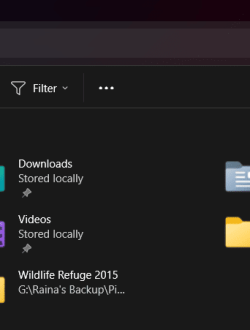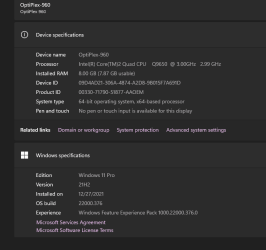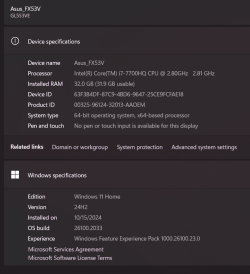- Local time
- 3:36 PM
- Posts
- 47
- OS
- Windows 11
Well damn, I've been chasing a non issue. It's odd my old dell optiplex from 08 is running great. It seems to clear it. So the fix it to wait.
My Computer
System One
-
- OS
- Windows 11
- Computer type
- Laptop
- Manufacturer/Model
- Asus FX53V
- CPU
- i7-7700HQ
- Motherboard
- GL553VE
- Graphics Card(s)
- Nvidia GeForce GTX 1050ti
- Screen Resolution
- 1920x1080
- Hard Drives
- PNY M.2 1TB, storage 870 evo 1TB









